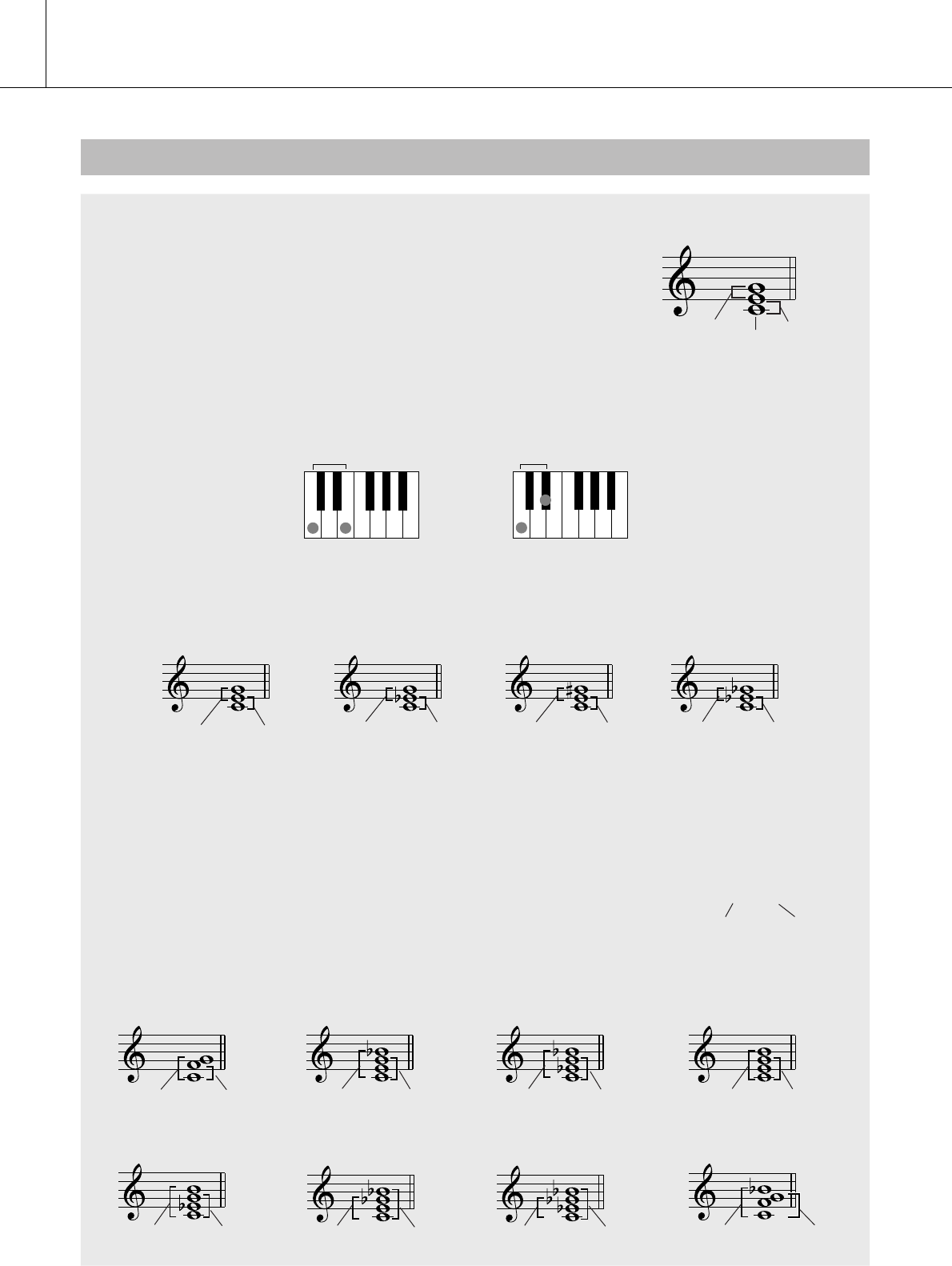
84 DGX-630/YPG-635 Owner’s Manual
Style (Auto-accompaniment) Functions
Two or more notes played together constitute a “chord”.
The most basic chord type is the “triad” consisting of three notes: the
root, third, and fifth degrees of the corresponding scale. A C major triad,
for example, is made up of the notes C (the root), E (the third note of the
C major scale), and G (the fifth note of the C major scale).
In the C major triad shown above, the lowest note is the “root” of the
chord (this is the chord’s “root position” ... using other chord notes for
the lowest note results in “inversions”). The root is the central sound of the chord, which supports and
anchors the other chord notes.
The distance (interval) between adjacent notes of a triad in root position is either a major or minor third.
The lowest interval in our root-position triad (between the root and the third) determines whether the triad
is a major or minor chord, and we can shift the highest note up or down by a semitone to produce two addi-
tional chords, as shown below.
The basic characteristics of the chord sound remain intact even if we change the order of the notes to create
different inversions. Successive chords in a chord progression can be smoothly connected, for example, by
choosing the appropriate inversions (or chord “voicings”).
● Reading Chord Names
Chord names tell you just about everything you need to know about a chord
(other than the inversion/voicing). The chord name tells you what the root of the
chord is, whether it is a major, minor, or diminished chord, whether it requires a
major or flatted seventh, what alterations or tensions it uses ... all at a glance.
● Some Chord Types (These are just some of the “Standard” chord types recognized by the DGX-630/YPG-635.)
Chord Basics
3rd
3rd
Root
Major third–four half steps (semitones) Minor third–three half steps (semitones)
CM Cm Caug Cdim
Major chord
Minor 3rd
Major 3rd
Major 3rd
Minor 3rd
Major 3rd
Major 3rd
Minor 3rd
Minor 3rd
Minor chord Augmented chord Diminished chord
Cm
Root note Chord type
Csus4 C7 Cm7 CM7
C7
(
b5
)
Cm7
(
b5
)
C7sus4
CmM7
Perfect 5
th
Perfect 4
th
Flatted 7
th
Major chord Flatted 7
th
Minor chord Major 7
th
Major chord
Major 7
th
Minor chord Flatted 5
th
7
th
chord
Flatted 5
th
Minor 7
th
chord
Flatted 7
th
Suspended
4
th
chord
Suspended 4
th
7
th
Minor 7
th
Major 7
th
7
th
, suspended 4
th
Minor 7
th
, flatted 5
th
7
th
, flatted 5
th
Minor/major 7
th


















